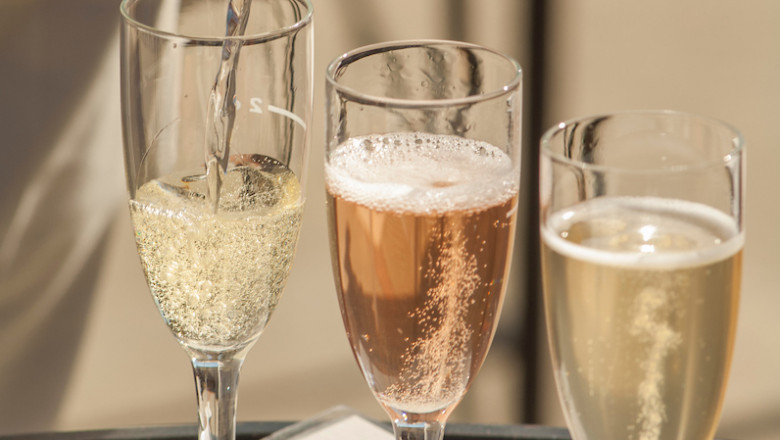views
The global sparkling wine market has seen substantial growth in recent years, with an increasing number of consumers turning to bubbly beverages for celebrations, special occasions, and even casual enjoyment. Sparkling wine, distinguished by its effervescence and refreshing taste, has long been a staple in the world of wine, but its rise in popularity has been fueled by shifting consumer preferences, growing middle-class incomes, and an expanding global wine culture.
Market Growth Drivers
The sparkling wine market is benefiting from a variety of forces, most notably the rising popularity of wine as an alcoholic beverage of choice. Increasing awareness about the health benefits of moderate wine consumption, including its antioxidant properties and heart health benefits, has spurred demand. Consumers today are more conscious of what they drink, which has led to a growing preference for organic and sustainable wines. Additionally, the strong presence of sparkling wine in celebratory events like weddings, holidays, and milestone birthdays further accelerates its popularity.
The global middle-class population, particularly in emerging economies, has also contributed significantly to the growth of the sparkling wine market. As disposable incomes rise in countries such as China, India, and Brazil, more people have access to premium products, including sparkling wine. These regions, traditionally dominated by beer and spirits consumption, are gradually embracing wine as a trendy and sophisticated beverage.
Key Trends
The sparkling wine market is evolving with several prominent trends. One of the most significant is the shift towards premium and luxury sparkling wines. Consumers are increasingly willing to pay more for high-quality, artisanal, or limited-edition sparkling wines. Champagne, Prosecco, and Cava continue to dominate the market, but there’s also growing demand for sparkling wines from lesser-known regions, including sparkling wines produced in the United States, Australia, and New Zealand.
Another important trend is the growing preference for lighter, less sweet sparkling wines. While the sweet, fruity styles of sparkling wines have long been popular, many consumers are now seeking drier options such as Brut and Extra Brut varieties. This shift is largely driven by health-conscious individuals seeking lower sugar content in their beverages. Additionally, the market has seen an increase in the demand for sparkling wines that are organic, biodynamic, and sustainably produced, catering to the growing environmental concerns of modern-day consumers.
Challenges Faced by the Market
Despite the sparkling wine market’s growth, there are several challenges that producers must navigate. One of the primary obstacles is the competition from other alcoholic beverages, particularly craft beer and spirits, which have seen a resurgence in popularity. Sparkling wine producers must continuously innovate to stand out in a crowded marketplace. Moreover, the cost of production for high-quality sparkling wines, particularly those from Champagne, can be prohibitively high, impacting profit margins and pricing strategies.
Another challenge lies in the regulation of the market. Sparkling wines from specific regions such as Champagne, France, and Prosecco, Italy, are subject to strict production regulations that can limit supply and increase costs. These regulatory requirements, while maintaining the quality and authenticity of the wine, can create barriers for new producers attempting to enter the market.
Regional Insights
Europe remains the largest consumer of sparkling wine, with countries like France, Italy, and Spain playing a dominant role. France’s Champagne, Italy’s Prosecco, and Spain’s Cava have earned international recognition for their unique production processes and exceptional quality. However, the sparkling wine market is witnessing notable growth in North America, particularly in the United States. Wine consumption in the U.S. has been on the rise, with Prosecco and other sparkling wines experiencing particularly strong demand.
Asia-Pacific, led by China and Japan, is another region showing great promise. The Chinese wine market is growing rapidly as more young consumers opt for wine over traditional spirits, driving the demand for premium and imported sparkling wines.
Future Projections
Looking forward, the sparkling wine market is expected to maintain its upward trajectory. Projections indicate a steady growth rate over the next five years, fueled by emerging markets, premium product demand, and an expanding base of wine enthusiasts. Additionally, the increasing interest in wine tourism, wine tasting events, and the rise of social media marketing will likely continue to generate interest in sparkling wine brands.
The future of the sparkling wine market will also be shaped by innovations in production methods and sustainability practices. The market is expected to see more producers embracing sustainable farming practices, environmentally friendly packaging, and advancements in fermentation technology to create wines that align with modern consumer values.
Conclusion
In conclusion, the sparkling wine market is set to continue its growth as consumers seek both quality and experience in their wine choices. With a diverse range of products to choose from, including luxury and organic sparkling wines, and an increasing number of emerging markets, the future of sparkling wine looks promising. The key to success in this market will be continued innovation, sustainability, and an understanding of evolving consumer preferences.






















Comments
0 comment